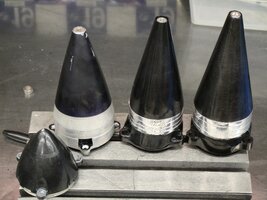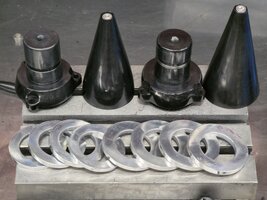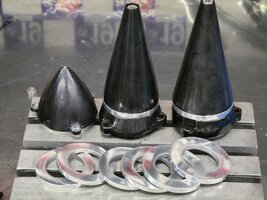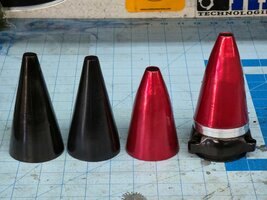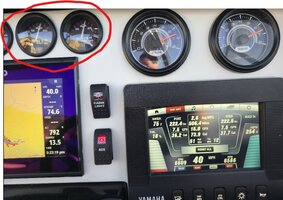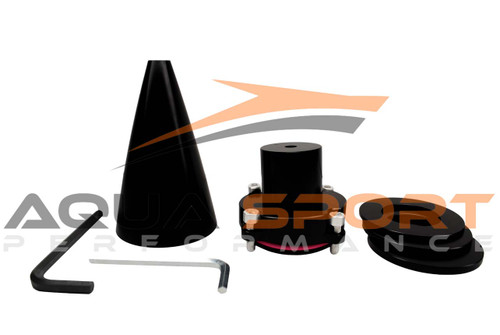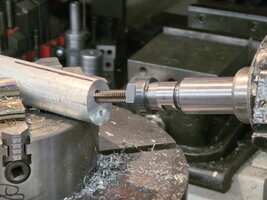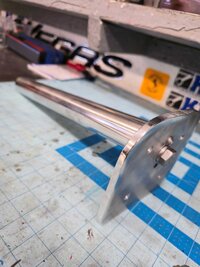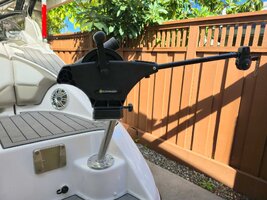gmtech16450yz
Jetboaters Captain
- Messages
- 292
- Reaction score
- 570
- Points
- 217
- Location
- SF Bay Area
- Boat Make
- Yamaha
- Year
- 2017
- Boat Model
- Limited S
- Boat Length
- 21
I bought a Lucky 13 pump cone back in 2017 for my GP1800 and it made tuning that ski way easier. But as much as I wanted them on our 212 Limited S, I just couldn't see spending the $700-$800 to do it. (They really should give some kind of break on things like that if you need to buy two of them for your one boat.)
So after doing a modification to the rotary table on my mill, I realized I would now be able to make a couple of these cones myself. It took a few days but I was able to pull it off! The 3 degree angle the base of the cones are at made it a little tricky. I was thrilled when I bolted up the first one and it was centered in the jet nozzle perfectly. Since I made these on a manual mill and lathe, without a DRO even, it's not like I could just select "TWO" in a CNC program and make another. So I ended up making the second one slightly smaller diameter and a tad shorter. The larger one will go in the port pump, the smaller one in the starboard. So I won't have to put 3 washers in one side and 0 in the other, they'll already be somewhat compensating for the uneven pumps we deal with in these boats. (Hopefully, I just finished them and have yet to put the boat in the water.)
Of course this is a "don't try this at home" kind of post, but at least for those that have the skills and/or access to a machine shop, it can be done. As always with my silly projects, I had fun and learned a bunch in the process.
So after doing a modification to the rotary table on my mill, I realized I would now be able to make a couple of these cones myself. It took a few days but I was able to pull it off! The 3 degree angle the base of the cones are at made it a little tricky. I was thrilled when I bolted up the first one and it was centered in the jet nozzle perfectly. Since I made these on a manual mill and lathe, without a DRO even, it's not like I could just select "TWO" in a CNC program and make another. So I ended up making the second one slightly smaller diameter and a tad shorter. The larger one will go in the port pump, the smaller one in the starboard. So I won't have to put 3 washers in one side and 0 in the other, they'll already be somewhat compensating for the uneven pumps we deal with in these boats. (Hopefully, I just finished them and have yet to put the boat in the water.)
Of course this is a "don't try this at home" kind of post, but at least for those that have the skills and/or access to a machine shop, it can be done. As always with my silly projects, I had fun and learned a bunch in the process.

